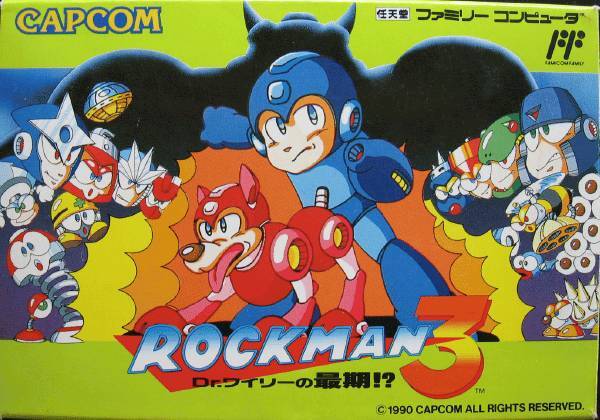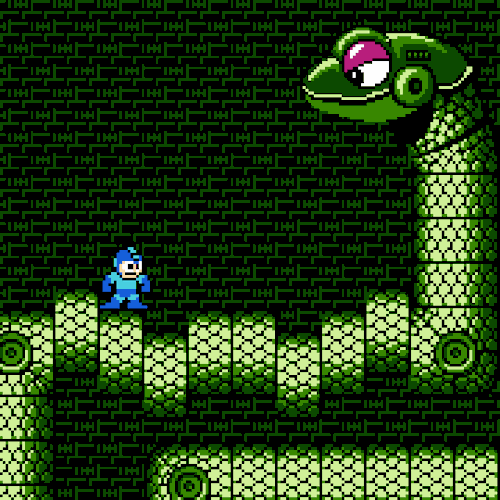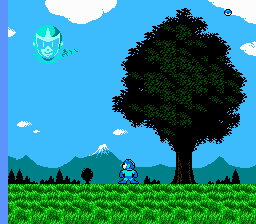Domo Arigato, Mr. Roboto, Domo Domo...
By pauljeremiah 1 Comments

I don't think we as a society talk enough about Mega Man. Before Monster Hunter, before Resident Evil, and before Street Fighter II, Mega Man was a star on Nintendo’s Famicom (and the NES soon after that). Capcom made a lot of wonderful games for Nintendo's 8-bit console, but none have had the staying power of Mega Man. And this week's topic is a big reason why: Mega Man 3.
The blue bomber's third game in the space of four years cemented the franchise as a pillar for Capcom in the home market. When it debuted in December of 1987, the original Mega Man (née Rockman) was one of the first original games made by Capcom for Famicom; their previous home games had been adaptations of or sequels to arcade releases, many of which were converted to the console by external contractors and often ended up on home computer platforms as well. On the other hand, Mega Man was made by an internal Capcom team led by Akira Kitamura specifically for the Famicom. While it wasn't an immediate hit, the team wanted to develop a sequel so badly that they agreed to make one in-between other assignments.
Mega Man 2 was thus a genuine passion project, finished within a year of the first game and released in Japan in December 1988. It had its share of reused assets, but at the time, it was undeniably larger and bolder than the first game. More importantly, it was the hit Capcom had been looking for: A million-seller that saw high-profile success on both sides of the Pacific. Another sequel was inevitable, and sure enough, in 1990, Mega Man 3 was released to wide acclaim... but not without a few bumps in the road.
To untrained-yet-eager Mega Man fans' eyes, the first three games were a purely heroic ascension from 1 to 2 to 3: Each game adds to its predecessor and increases in size and complexity. But even the quickest glance reveals a much more significant gap from 1 to 2 than in 2 to 3. The original Mega Man has just six bosses (fought in any order, a then-revolutionary mechanic) whose powers can then be used against the remaining robot masters (though it was years later when I actually discovered that), plus one extra tool that must be retrieved separately. Mega Man 2 has eight bosses with three different tools, which are automatically received as players progress. Mega Man 3 has the same, although those three additional tools are now combined into a single robot dog named Rush. The idea of giving Mega Man a cyber canine companion was Akira Kitamura's suggestion; in a 2011 interview translated by Shmuplations.com, he says the numbered items in Mega Man 2 were always “provisional", and he had intended to name them.
Why was Kitamura making "suggestions" for Mega Man 3 instead of implementing them himself? Because he left Capcom, the third entry’s development fell to planner Masahiko Kurokawa (credited under the pseudonym Patariro). Kurokawa had not worked on the previous Mega Man games. Still, he had several years at Capcom under his belt, contributing to other Famicom and NES games like Commando and Strider. Unfortunately, Kurokawa left Mega Man 3 before it was complete, although not in a cruel way; he was ultimately credited in the game’s final release and would continue at Capcom for years—including roles on subsequent Mega Man games and the original Resident Evil.

With these significant staff shake-ups and behind-the-scenes tensions, it is a minor miracle that Mega Man 3 turned out as well as it did. Then again, it has a lot going for it. The game's soundtrack is another winner, despite being the series' third straight game with a new composer handling the music (in this case, Harumi Fujita started scoring the game but had to drop out for maternity leave, so Yasuaki Fujita—no relation—finished the project). Mega Man 3 gave its protagonist a new ability, the power to slide, which gives the game a faster feel. He also acquired a new rival in Proto Man (née Blues), who wears both sunglasses and a scarf, because one accessory is not cool enough.
With Proto Man, Mega Man 3 also contains much more lore than the previous two games, for better or worse. Before 3, Mega Man games did not have a lot of explicit story content: The original game ends with a text crawl about Mega Man winning the battle, and Mega Man 2 opens with a text crawl (over mostly the same music) about who Mega Man even is and why he's fighting. As a kid at the time, that was enough for me to speculate as to why Mega Man looked like a kid sometimes but also had the power to destroy other robots. But 3 kicks it up a notch, with in-game scenes of Dr. "Right" panicking and doling out exposition to Mega man and the player, and the end credits naming Proto Man as Mega Man's "brother." Interestingly, Roll is not called Mega Man's "sister" here even though she's listed right after him in the credits; she is merely a "housekeeping robot."
Regardless of its tumultuous development, Mega Man 3 was well-received and sold more than a million copies, making Mega Man a bankable console star. Capcom would end up making a hexology of Mega Man games for NES, and the series would continue into future console generations. Most recently, Mega Man 11 was released for current-generation consoles and PC in 2018. As for Mega Man 3, it (along with 1 and 2) was amongst the few 8-bit games to be remade for 16-bit consoles with Mega Man: The Wily Wars on Sega’s Mega Drive/Genesis and Game Gear. Mega Man 1, 2, and 3 were then remade again (along with 4-6) for the Sony PlayStation in 1999. Mega Man 3 would later be re-released many times over in various Capcom-made collections as well as Nintendo's Virtual Console for Wii, 3DS, and Wii U. Though Mega Man 3 is absent from the Nintendo Switch Online service, modern console owners can play all the classic Mega Man titles via the Mega Man Legacy Collection.

With 30 years of hindsight, I still feel like Mega Man 2 is the apex of his 8-bit adventures—Mega Man 3 is a good sequel. Still, it's also rather padded-out, with four extra stages that force players to defeat all eight bosses from the previous game before finally laying siege to Dr Wily's fortress. Once there, by the way, two of the Dr Wily boss battles are remakes of Mega Man 1 foes, which never sat right with me after the amount of innovation shown in Mega Man 2. Still, every few years, I make a point to go back and play the 8-bit Mega Man games, and Mega Man 3 certainly holds up against most games of the era… it just doesn't quite top its direct predecessor.
